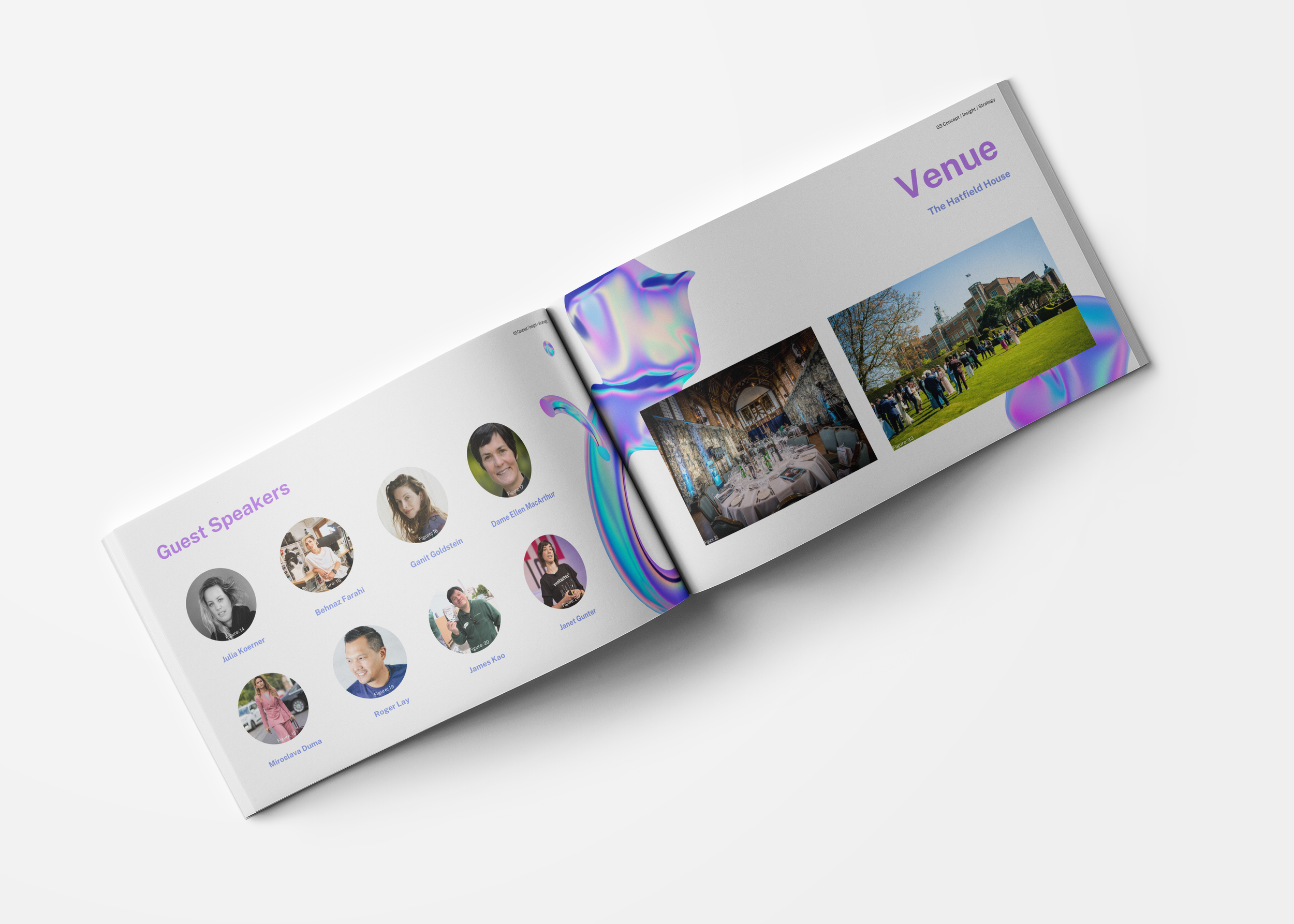
<Industry Practice> in Nottingham Trent University, 2024
Fashion Education Symposium Proposal for CFC
As part of the <Industry Practice> course, I planned a Fashion Education Symposium Event for the Commonwealth Fashion Council (CFC) under the theme "Sustainable Futures: Planet, People, Hope". This event focused on tackling the urgent environmental and ethical issues facing the fashion industry.
My team planned the event with an emphasis on the pivotal role of technology, especially augmented reality (AR), virtual reality (VR), artificial intelligence (AI), the Internet of Things (IoT), 3D printing, and blockchain, in transforming fashion into a more sustainable and efficient practice. The proposal includes sections on problem identification, brand analysis, market analysis, consumer analysis, concept and strategy, and success metrics.
In the problem identification section, we analysed the environmental and ethical issues prevalent in the fashion industry, focusing on serious carbon emissions, energy consumption, water and chemical use, waste generation, and the impact of raw material production.
Furthermore, the brand analysis section examined the strengths, weaknesses, opportunities, and threats of the Commonwealth Fashion Council (CFC), highlighting challenges such as resource allocation against the backdrop of its global network, dedication to sustainability, innovative use of technology, and dependency on partnerships. The market analysis section delved into the 'sustainable fashion industry', identifying an increase in consumer demand for sustainable fashion driven by technological innovation and evolving consumer behaviour. This section proposed significant market potential and growth opportunities within the sustainable fashion industry as consumer preferences shift towards ethical and environmentally friendly products. The consumer analysis identified Millennials and Generation Z as key drivers of the sustainable fashion movement, emphasising their preference for authenticity, sustainability, and ethical practices in their purchasing decisions. Based on this, Generation Z was chosen as the main target.
The concept introduced "GreenThread AR: Recycled Material Escape Room" as the main event, aiming to combine entertainment with education to highlight sustainable fashion practices through immersive AR/VR experiences. The specific strategy outlined a detailed plan for the 2-day event, including setting up escape rooms with various sustainability-themed rooms, inviting industry speakers, and choosing a comprehensive venue that reflects the event's sustainability goals. Additionally, the marketing strategy included influencer marketing, discussions about the sustainable future of fashion, PR packages, a virtual marketplace/auction, and cross-promotion efforts to increase event awareness and engagement. The budget section analysed costs related to staffing and described various revenue streams to ensure the event's financial viability, including exhibition booths, affiliate marketing, and registration fees.
We proposed tracking environmental impact reduction, engagement and adoption rates, and media/social engagement as KPI methods to measure the success of the event. In conclusion, the symposium aimed to promote a transition towards more sustainable, ethical, and innovative practices within the fashion industry by utilising technology to reduce environmental impacts and enhance human rights. This initiative served as a model for how the fashion sector can address its sustainability challenges through education, technology, and collaborative innovation.
Applying Systems Thinking to this project fundamentally changed my approach and solutions. By recognising the fashion industry as a complex system comprised of various interconnected components, I was able to devise comprehensive strategies to address its multifaceted sustainability issues.
Throughout the project, applying Systems Thinking enabled me to gain various insights. Systems Thinking is a holistic approach to analysis focusing on how a system's components interrelate and how systems operate over time within the context of larger systems. By applying Systems Thinking, I mapped out the ecosystem of the fashion industry and identified key elements such as material sourcing, manufacturing, supply chain logistics, consumer behaviour, and waste management. This helped in understanding how changes in one element, like the adoption of sustainable materials, affect other elements, such as waste reduction and consumer perception of brand sustainability.
Collaborating on this project underscored the value of diverse perspectives and expertise. My team faced challenges, especially in aligning our varied views on the role of technology in sustainability. Through structured evaluation and open communication, we identified AR and AI as critical technologies for engaging consumers and optimising production processes, respectively. This process taught me the importance of empathy, flexibility, and compromise in teamwork. Each disagreement was resolved by focusing on our common goal: to promote sustainability in the fashion industry through technology. Furthermore, the project enhanced my skills in research, critical thinking, and collaboration and deepened my understanding of sustainable practices and their significance in the fashion industry.
Consequently, this project was an innovative learning experience, providing profound insights into the challenges and opportunities for sustainability in fashion. It has motivated me to continue exploring the intersection of technology and sustainability, both academically and in my future career.
Project Outcomes
You can see the learning outcomes through these two files.
















